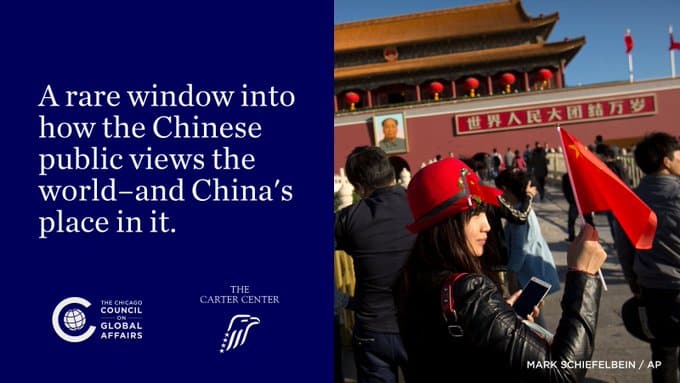Is China A “Market Economy”? It Doesn’t Matter.
Based on the headlines in the trade press recently, you might get the idea that the United States faces an influx of massive amounts of Chinese steel at the end of this year, thanks to an obscure provision in China’s WTO accession protocol about market economy status.
The widely cited but poorly understood provision will not leave us defenseless to steel or any other products flooding the U.S. market. But mishandling this important issue could damage our credibility and impact U.S.-China relations for years to come. Fortunately, there is a way out – and the question of whether China is a “market economy” has nothing to do with it.
When China joined the World Trade Organization (WTO) in 2001, its government’s pervasive intervention in the economy meant that China’s trading partners could not trust data on the true cost of production and determine a fair market value in anti-dumping cases. A provision in China’s accession agreement resolved this issue by allowing other WTO member countries to use special tariff calculations, known in the U.S. as non-market economy (NME) calculations, in China cases—for a period of 15 years. As a result, the U.S. could use a formula to determine the value of anti-dumping tariffs to apply to Chinese goods sold at unfairly low prices. That provision is set to expire Dec. 11, 2016.
Despite the current rhetoric, that much of the situation is indisputable. Three successive U.S. administrations — all that have served during and since China joined the WTO — have stated over and over again in public and in official documents that the ability to use NME calculations ends after 15 years. As late as 2012, the Obama Administration explained the provision in its annual report to Congress on China’s WTO compliance,
“China’s accession agreement also includes provisions establishing several mechanisms… designed to prevent or remedy injury that U.S. or other WTO members’ industries and workers might experience based on import surges or unfair trade practices. These mechanisms include…the authority for WTO members whose national laws contain market economy criteria as of the date of China’s WTO accession to utilize a special non-market economy methodology for measuring dumping in anti-dumping cases against Chinese companies (this China-specific authority expires after 15 years, running from the date of China’s WTO accession).”
This commitment was integral to getting final agreement with China at the highest levels on the terms of its WTO entry. End-stage negotiations with then-Premier Zhu Rongji specifically included this provision and its definitive end date to close the deal. Breaking the commitment would be enormously detrimental to American interests on other more significant issues with China, and would also encourage the Chinese to think that breaking commitments is acceptable behavior – not a message the United States should convey.
Parts of China’s economy are now functioning as a market economy. At the same time, we can all agree that there are parts of China’s economy that continue to function contrary to market principles. For example, by its own admission, China has significant overcapacity in products such as steel and aluminum. Those industries have benefited from favorable subsidies and other government intervention, with a detrimental effect on both international and China’s own domestic markets.
The key to the current discussion is in what comes next. Many have argued over whether China meets the criteria under U.S. law to be treated as a market economy. A closer reading of China’s WTO accession protocol reveals that this question is irrelevant. The language in the protocol does not require the U.S. to name China as a market economy in December; it simply requires ending the use of the NME methodology – an important distinction that suggests a path forward.
There are several principles that should guide how the U.S. can best approach this issue — a middle ground that would enable us to both meet our WTO commitment and address the clear distortions that some sectors of China’s economy are still creating not only in China but also in global markets:
- Honor the commitment and end the use of blanket, across-the-board NME methodology.
- Be WTO compliant.
- Retain our ability to apply U.S. trade remedies when necessary and fact-based.
- Not be China-specific – what’s good for China ought to be good to do for any trade partner.
- Not require changing U.S. law.
One solution that would appear to fit the above criteria was included in legislation passed by Congress last summer. Section 504 of the Trade Preferences Extension Act, which was signed in to law on June 29, 2015, expanded Commerce’s discretion to assess “particular market situations” in anti-dumping investigations, and to use methodologies other than strict comparisons with domestic prices and costs when it finds that those particular market situations would prevent a proper comparison.
In other words, rather than using non-market methodologies across the board and in all cases, Commerce could use this authority to address the distortions that may remain in some sectors of China’s economy – just as it can do in cases involving other trading partner economies.
There would need to be a rigorous, grounded process for demonstrating a sector or producer qualifies for using an alternative methodology, to avoid simply using this approach for protectionist purposes. The alternative methodology would need to be WTO compliant, but the U.S. has many gifted trade lawyers who should be able to craft an approach to meet this bar. We should also be talking bluntly to the Chinese government, pointing out that we will honor the commitment – and clarifying what that commitment is – yet we will still take steps to ensure their overcapacity problem is not exported to us.
Rather than wasting more time arguing over what the U.S. does not need to do on Dec. 11, we should honor the commitment that three successive administrations have articulated and focus our energy on finding the effective, middle ground solution – a solution which fits squarely into US interests by addressing the distortions of China’s overcapacity in certain sectors and ensuring that US-China relations remain on stable footing.
By JOHN FRISBIE and ERIN ENNIS Apr. 26, 2016 on the US-China Business Council
Read more here








